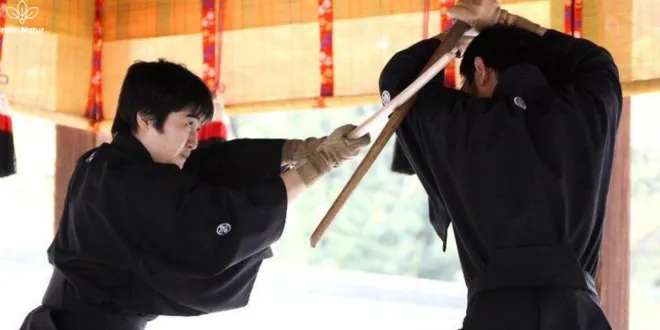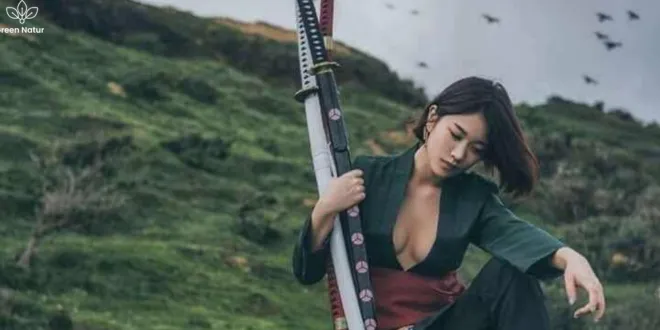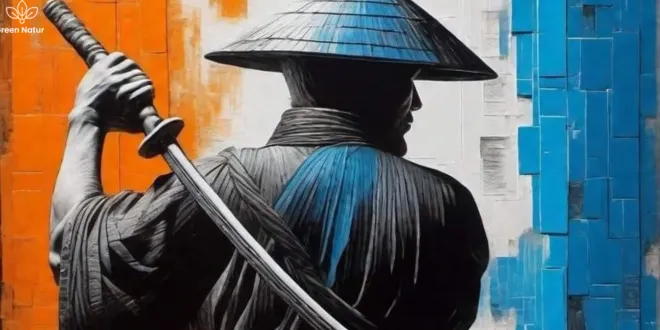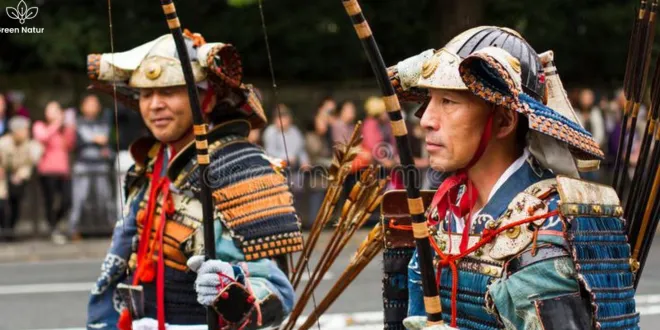Kyoto is a city where Japan’s rich past comes alive, and nothing captures that spirit more than the enduring legacy of the samurai. With its historic temples, preserved districts, and cultural landmarks, Kyoto is the perfect place to experience Samurai culture in Kyoto firsthand.
Visitors can explore samurai museums, try on traditional armor, or even take part in swordsmanship workshops. These immersive experiences provide a glimpse into the discipline, values, and daily life of Japan’s legendary warrior class.
Whether you’re walking through ancient streets or learning the bushido code, engaging with Samurai culture in Kyoto adds depth and meaning to your travel. It’s a journey through history that leaves a lasting impression.

Top Samurai Museums in Kyoto You Must Visit
When exploring Samurai culture in Kyoto, one of the best places to start is its unique museums dedicated to the warrior legacy. The Kyoto Samurai and Ninja Museum is a top destination, offering an interactive look into samurai history through real weapons, armor, and guided tours in English and Japanese. Visitors can even take part in sword-handling sessions and try on authentic-style samurai outfits, giving them a hands-on experience of the samurai life.
Other notable spots include the Kyoto National Museum, which houses rotating exhibitions of samurai artifacts, and the Toei Kyoto Studio Park, where history meets entertainment. These museums help travelers connect with the spiritual, strategic, and artistic layers of samurai heritage, showcasing how the warrior class shaped not just Kyoto, but Japanese culture as a whole.
Where to See Authentic Samurai Armor and Weapons
One of the most impressive elements of Samurai culture in Kyoto is the stunning craftsmanship of traditional weapons and armor. You can admire these historical treasures at places like the Kyoto National Museum and specialized galleries throughout the city. Authentic katana swords, ornate kabuto (helmets), and detailed yoroi (armor) sets reflect the technical skill and deep symbolism embedded in samurai equipment.
These items weren’t just tools of war—they represented discipline, honor, and the warrior’s personal journey. Visitors gain a richer understanding of the samurai’s dual nature as both warrior and philosopher, where aesthetics and practicality combined. Seeing these items in person adds depth to any historical or cultural tour in Kyoto.
Samurai Experiences for Tourists: Dress, Train, Learn
If you’re looking to do more than just observe, Kyoto offers immersive experiences where visitors can actively engage with Samurai culture in Kyoto. Tourists can participate in samurai training sessions at the Samurai & Ninja Museum, donning full armor and practicing sword techniques with expert instructors.
These hands-on workshops include lessons in posture, movement, and even basic sword kata, giving a real feel for the discipline required of ancient warriors. For many, these experiences provide a deeper appreciation of samurai values—courage, control, and respect. It’s more than just a photo opportunity; it’s a journey into a historical mindset that still influences Japanese culture today.

The Role of Bushido in Modern Kyoto
While the age of the samurai has passed, their code—Bushido, or “the way of the warrior”—still echoes throughout modern Kyoto. The principles of loyalty, honor, and self-discipline are visible in the city’s traditions, from tea ceremonies to business etiquette.
Understanding Bushido is essential for anyone looking to grasp the enduring influence of Samurai culture in Kyoto. It’s not just about battles and armor; it’s about a lifestyle centered on inner strength, purpose, and respect for others. Many locals and businesses in Kyoto still embody these values, creating a city where ancient ethics meet contemporary life.
Famous Samurai Who Lived in Kyoto
Kyoto has been home to some of the most influential figures in samurai history. Legendary warriors like Akechi Mitsuhide and Toyotomi Hideyoshi played pivotal roles in Japan’s political and military evolution—and they walked the same paths tourists explore today.
Visiting historic sites such as Nijo Castle, where power struggles once unfolded, helps bring their stories to life. These figures shaped not only Kyoto’s history but also the broader fabric of Samurai culture in Kyoto. Their lives are a blend of strategy, ambition, loyalty, and betrayal, offering timeless lessons for modern readers and travelers alike.
Certainly! Here are the expanded and informative explanations for the second 5 subheadings, each naturally incorporating the main keyword: Samurai culture in Kyoto.
Kyoto Temples and Shrines Linked to the Samurai Era
Many of Kyoto’s most iconic temples and shrines hold deep ties to Samurai culture in Kyoto. These sacred spaces weren’t just places of worship; they were also centers of political influence and refuge for warrior clans. For example, Kiyomizu-dera and Tofuku-ji were frequented by samurai and sometimes served as strategic strongholds during times of conflict.
Visiting these temples today allows you to trace the spiritual side of the samurai—their connection to Zen Buddhism, meditation, and the pursuit of inner peace. These historical connections reveal how religion and warfare were intertwined in the life of a samurai, making temple visits a vital part of understanding Kyoto’s warrior past.

How Samurai Culture Shaped Kyoto’s Festivals and Traditions
Kyoto’s rich calendar of festivals often reflects the legacy of the samurai, embedding centuries-old warrior traditions into modern cultural celebrations. Events like the Jidai Matsuri (Festival of the Ages) vividly showcase Samurai culture in Kyoto through parades of historical reenactors dressed in samurai armor, recreating key moments from Japan’s feudal era.
Many rituals in Kyoto festivals, from ceremonial marches to martial arts demonstrations, are directly inspired by samurai customs. These traditions keep the warrior spirit alive in the hearts of locals and offer visitors a dynamic and festive way to engage with samurai heritage in a contemporary setting.
Best Guided Tours for Samurai History Lovers
To truly understand Samurai culture in Kyoto, joining a guided tour led by a local expert can enhance your experience. Whether you’re walking through the old streets of Gion, visiting castles like Fushimi-Momoyama, or exploring the battlegrounds of ancient feuds, knowledgeable guides share stories that textbooks cannot.
Specialized samurai history tours often include stops at lesser-known sites with fascinating backstories, as well as hands-on sessions like sword practice or tea ceremonies rooted in Bushido. These tours provide context, emotion, and storytelling—helping you connect with the samurai legacy on a personal level.
Samurai-Inspired Souvenirs and Where to Buy Them in Kyoto
After exploring Samurai culture in Kyoto, many travelers want to take a piece of that history home. Kyoto’s artisan shops offer a range of samurai-inspired souvenirs, from miniature armor sets and handcrafted katana replicas to calligraphy scrolls featuring Bushido teachings.
Neighborhoods like Nishiki Market and Teramachi Street house traditional stores where you can find high-quality, culturally rich keepsakes. These items are not only beautiful—they symbolize the values of honor, precision, and craftsmanship that defined the samurai. Buying such souvenirs supports local artisans and deepens your connection to Kyoto’s historic roots.
Kyoto’s Role in Preserving Samurai Heritage Today
Kyoto isn’t just a city of the past—it actively works to preserve and promote Samurai culture in Kyoto through education, tourism, and community efforts. Local museums, martial arts dojos, historical reenactments, and academic programs ensure that the samurai spirit remains accessible to future generations.
From schools teaching Kenjutsu (swordsmanship) to cultural centers hosting lectures on samurai ethics, the legacy is alive and evolving. Kyoto acts as a living museum where history isn’t just displayed—it’s experienced. This ongoing preservation keeps the warrior code relevant in a modern world, offering timeless insights into courage, resilience, and self-mastery.

Final Thoughts
Exploring Samurai culture in Kyoto is more than just stepping into the past—it’s about connecting with a timeless code of discipline, honor, and inner strength that still echoes through the city’s temples, museums, and traditions. From the moment you walk the grounds of Nijo Castle to the time you try on a suit of armor or sip matcha in a quiet teahouse, Kyoto invites you to experience the values that once shaped a nation.
Whether you’re a history enthusiast, a cultural traveler, or someone simply curious about Japan’s warrior heritage, engaging with Samurai culture in Kyoto offers a deeper understanding of how history, philosophy, and art are woven into everyday life. It’s an unforgettable journey into a rich legacy that continues to inspire respect, resilience, and reflection.
As you leave Kyoto, you don’t just carry souvenirs—you carry stories, insights, and perhaps a newfound appreciation for the strength of silence, the beauty of discipline, and the spirit of the samurai that still lives on in this timeless city.
Frequently Asked Questions
1. What is Samurai culture in Kyoto?
Samurai culture in Kyoto refers to the historical practices, traditions, and lifestyle of the samurai warriors who lived and worked in Kyoto during Japan’s feudal era. It includes their code of conduct, martial arts, and cultural influence on the city’s temples, shrines, and festivals.
2. What is the best way to explore Samurai history in Kyoto?
The best way to explore Samurai history in Kyoto is by visiting key historical sites like Nijo Castle, Kyoto Samurai Museum, and participating in guided tours. These locations offer insights into the lives of samurai and their influence on Kyoto’s culture.
3. Can I see Samurai reenactments in Kyoto?
Yes, Kyoto hosts reenactments of Samurai events, particularly during the Jidai Matsuri (Festival of the Ages). This festival showcases parades with actors dressed as samurai, reenacting historical battles and samurai lifestyles.
4. Are there any samurai-themed experiences in Kyoto?
Yes, Kyoto offers samurai-themed experiences such as swordsmanship lessons, wearing samurai armor for photoshoots, and attending traditional tea ceremonies that reflect samurai culture.
5. Where can I buy Samurai-inspired souvenirs in Kyoto?
You can find Samurai-inspired souvenirs, like miniature armor, swords, and calligraphy scrolls, at shops in Nishiki Market, Teramachi Street, and other local artisan shops in Kyoto.
6. What is the significance of Kyoto in Samurai history?
Kyoto was the capital of Japan for over a millennium and served as a central hub for samurai culture, politics, and warfare. The city played a key role in shaping the warrior class and their influence on Japanese society.
7. What samurai traditions are still practiced in Kyoto today?
Some samurai traditions still practiced in Kyoto today include Kenjutsu (swordsmanship), traditional tea ceremonies, and martial arts like Iaido and Kendo. These traditions are preserved through dojos, cultural centers, and events in Kyoto.
8. What is the best time to visit Kyoto for Samurai culture?
The best time to visit Kyoto for Samurai culture is during the Jidai Matsuri (Festival of the Ages) in October, where you can see samurai reenactments and learn about the history of Kyoto’s warrior class.
9. Is there a museum dedicated to Samurai in Kyoto?
Yes, the Kyoto Samurai Museum offers an extensive collection of Samurai armor, weapons, and historical exhibits, providing a deep dive into Samurai culture and their role in Kyoto’s history.
10. Can I learn about the Samurai code (Bushido) in Kyoto?
Yes, many historical sites and educational programs in Kyoto teach the principles of Bushido (the way of the warrior), which emphasizes honor, discipline, and loyalty. You can also explore these values through samurai-themed tours and experiences.

